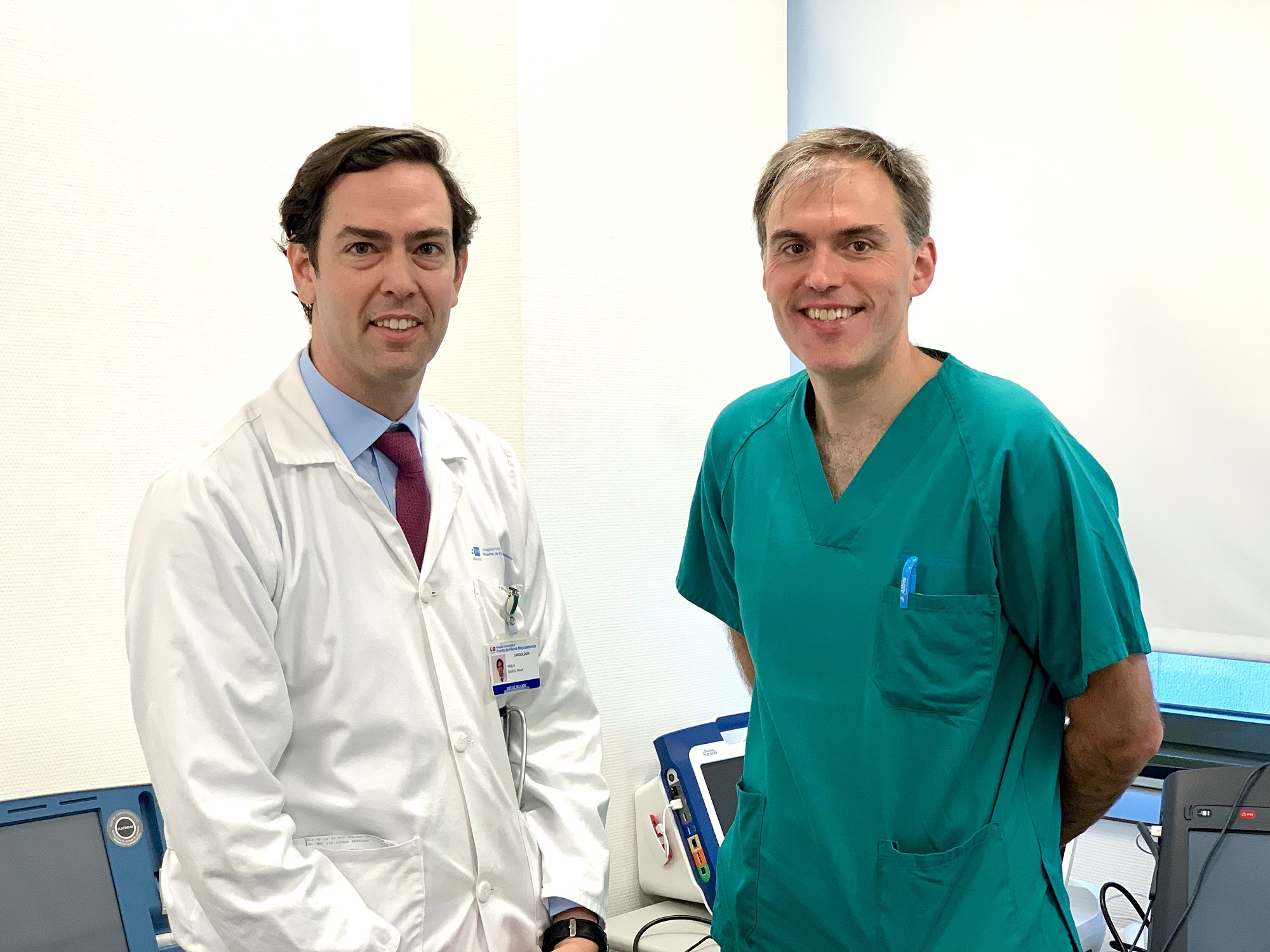EJHF: Spanish scientists combine genetic and imaging data to improve the treatment of dilated cardiomyopathy
Genetic screening combined with the detection of fibrosis identifies patients at risk of malignant arrhythmias or developing heart failure with severe complications
Combining a person’s genetic profile with imaging data obtained by cardiac magnetic resonance accurately predicts the prognosis of patients with dilated cardiomyopathy, the most frequent cause of heart failure.
This is the finding of a Spanish study published in the European Journal of Heart Failure and coordinated by Dr. Pablo García-Pavía, cardiologist at the Centro Nacional de Investigaciones Cardiovasculares (CNIC), and Hospital Puerta de Hierro Majadahonda in Madrid, and a member of the Spanish research network on cardiovascular disease (CIBERCV). The study is the largest in the world to correlate clinical outcomes with the genetic profiles and cardiac magnetic resonance data of dilated cardiomyopathy patients.
Dilated cardiomyopathy is the most frequent cause of heart disease in young people and the leading cause of heart transplantation in the world. The disease affects 1 person in every 250 of the general population and is characterized by an enlargement of the heart accompanied by a decline in its capacity to pump blood.
Patients with this condition are at high risk of arrhythmias and sudden cardiac death.
The study examined genetic and cardiac magnetic resonance data collected from 600 patients in 20 Spanish hospitals between 2015 and 2020. The investigators demonstrated that a combination of specific genetic traits with the presence of fibrosis detected by cardiac magnetic resonance imaging accurately identifies those patients who will develop malignant arrhythmias or severe complications of heart failure.
Dr. Jesús Gonzalez Mirelis, a cardiologist at Hospital Puerta de Hierro and codirector of the study, explained that there is currently a lack of good prognostic markers for patients with dilated cardiomyopathy. As a result, to prevent sudden death, patients are routinely selected for more aggressive interventions, such as the placement of a defibrillator device, based on the degree of weakening of the heart’s pumping action.
A new study publihed in the European Journal of Heart Failure
presents the largest genetic analysis to date of dilated cardiomyopathy patients monitored longitudinally by cardiac magnetic resonance
The new study shows that classifying patients according to their genetic profile and the presence of fibrosis detected by cardiac magnetic resonance imaging “gives a much more accurate indication of patient risk than the extent of weakening of cardiac pumping capacity, the method used until now; the problem with the current method is that some patients with low-grade cardiac weakening develop complications, whereas others with extensive weakening are stable and don’t develop problems over the long term,” said Dr. García Pavía.
The researchers found that patients lacking genetic alterations and showing no sign of fibrosis had a very good prognosis, with little risk of sudden death irrespective of the weakening of cardiac pumping capacity.
According to the authors, the study opens the way to a more personalized approach to dilated cardiomyopathy, with each patient receiving the most appropriate treatment based on a precise cardiological assessment.
“The findings of this study allow dilated cardiomyopathy patients to be treated according to their specific characteristics and open the way to the application of personalized medicine in this area of cardiology,” concluded Dr. García-Pavía.
The following centers participated in the study: Hospital Universitario Puerta de Hierro, IDIPHISA; CIBER Cardiovascular; Hospital General Universitario Gregorio Marañón; Instituto de Investigación Biomédica de Salamanca (IBSAL)- Complejo Asistencial Universitario de Salamanca; Universidad de Salamanca; Hospital Universitario Virgen de la Arrixaca de Murcia; Hospital Universitari Vall d'Hebron, Vall d'Hebron Instituto de Recerca (VHIR), Universitat Autonoma de Barcelona; Complejo Hospitalario de Navarra; Instituto de Investigación Biomédica de A Coruña (INIBIC), Complexo Hospitalario Universitario de A Coruña; Universidad de A Coruña; Complejo Hospitalario Universitario de Cáceres; Hospital Universitario Virgen de la Victoria IBIMA, Málaga; Instituto de Ciencias del Corazón (ICICOR); Hospital Clínico Universitario Valladolid; Hospital General Universitario de Alicante, Instituto de Salud e Investigación Biomédica; Hospital Universitario 12 de Octubre, Instituto de Investigación i+12; Hospital Clínico, IDIBAPS, Universitat de Barcelona; Instituto de investigación Sanitaria de Santiago; Complexo Hospitalario Universitario de Santiago; Hospital Universitario Virgen de las Nieves; Hospital Universitario Son Llatzer & IdISBa; Hospital Universitario Virgen del Rocío; Hospital Univesitari Dr. Josep Trueta; Instituto del Corazón & Hospital Universitario Germans Trias, and Universidad Francisco de Vitoria (UFV).
The study was funded by grants from the Instituto de Salud Carlos III with cofunding from the Euroean Regional Development Fund (“A way to build Europe”) and the European Social Fund (“Investing in Your Future”).











